My Lisbon wanderings took me outside the city one day, and into the magical hills of Sintra.
And I don’t use the term “magic” lightly… Magic has long been associated with the area. And it’s moss-clad forests resonate with otherworldly chants.
Even the Romantic poet Lord Byron wrote about the place in the 18th century. His poem “Childe Harold’s Pilgrimage” cites “Cintra’s glorious Eden.”
It was a pleasant walk through fresh misty air from the railway station to my first stop: Sintra National Palace.
This is said to be the best preserved medieval Royal Palace in Portugal, and was inhabited continuously from early 15th century to late 19th century.
Despite some wonderful architectural touches — like the painted ceiling of the Swan’s Room, and Islamic-inspired tile work and arches that reminded me of Andalusia — I just wasn’t feeling the magic here.
The palace was crowded with tour groups who pushed into every available space, led by aggressive guides who acted as though their particular group deserved some sort of special privileged access.
Why is it that the stupidest person in any room also speaks the loudest? It seems to be a universal rule.
I love touring old palaces and homes. But to be honest, I was glad to get out of this place and back into the mountain air.
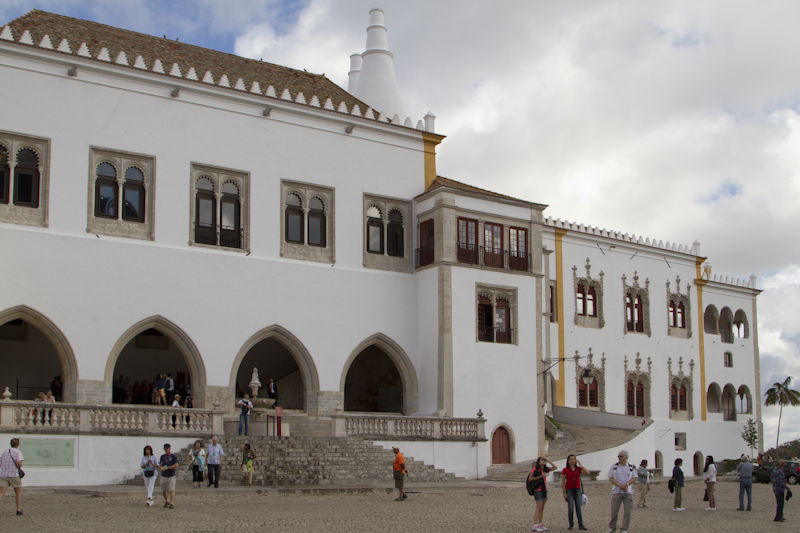
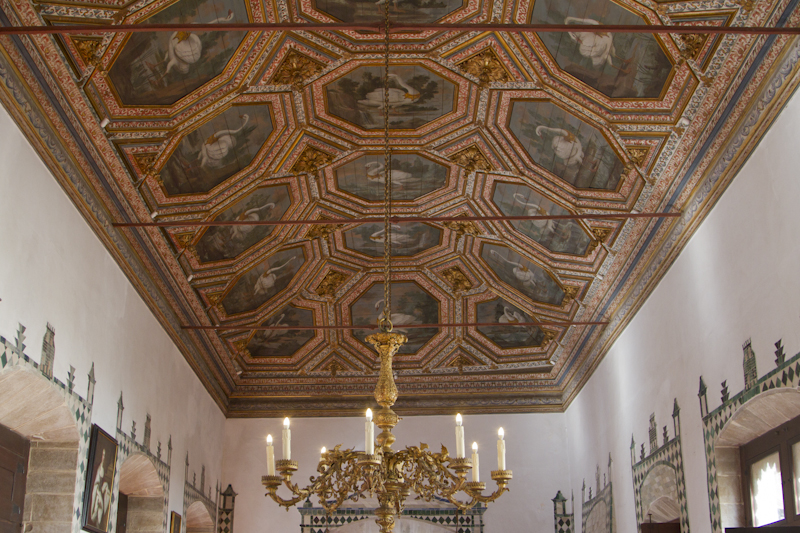
Thankfully, space and atmosphere were just a 10 minute walk away…
We followed the nearest road out of town to Quinta da Regalerias, summer residence of the wealthy Carvalho Monteiro family in the late 1800’s and early 1900’s.
The neo-Manueline palace and extensive gardens belonged to many owners over the years. But it was Monteiro who transformed it from an impressive mansion to a magical world of symbols and alchemy.
The self-professed alchemist built a laboratory on the roof of the house, accessed by a private stairway from his library / study. And he hired some of Portugal’s best known artists to create a chapel, a system of tunnels and grottos, and other strange structures throughout the garden, all of which embodied symbols of alchemy, Masonry, the Knights Templar, and the Rosicrucians.
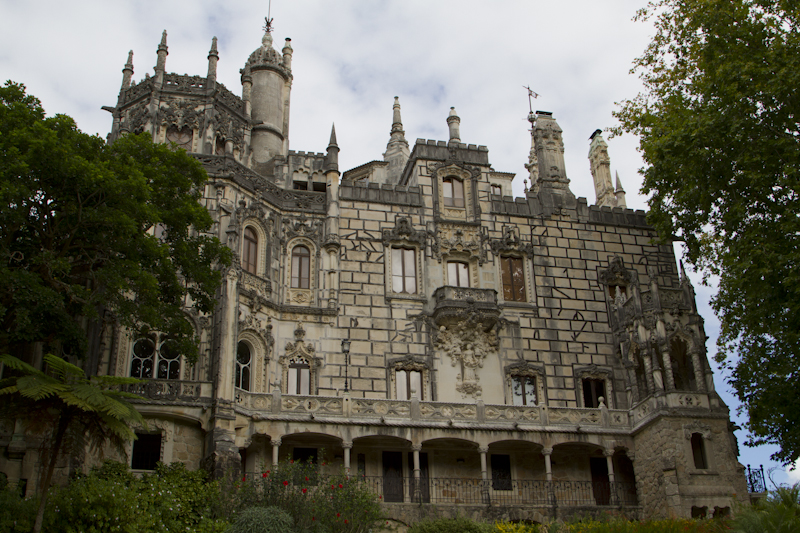
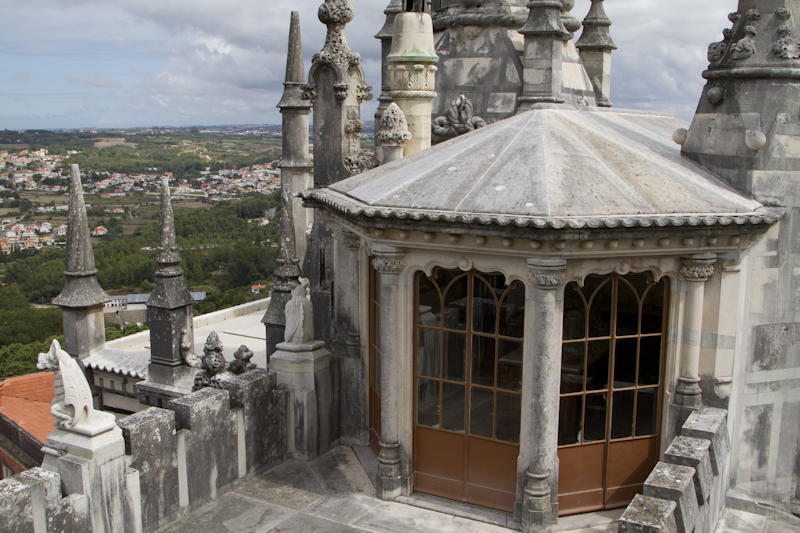
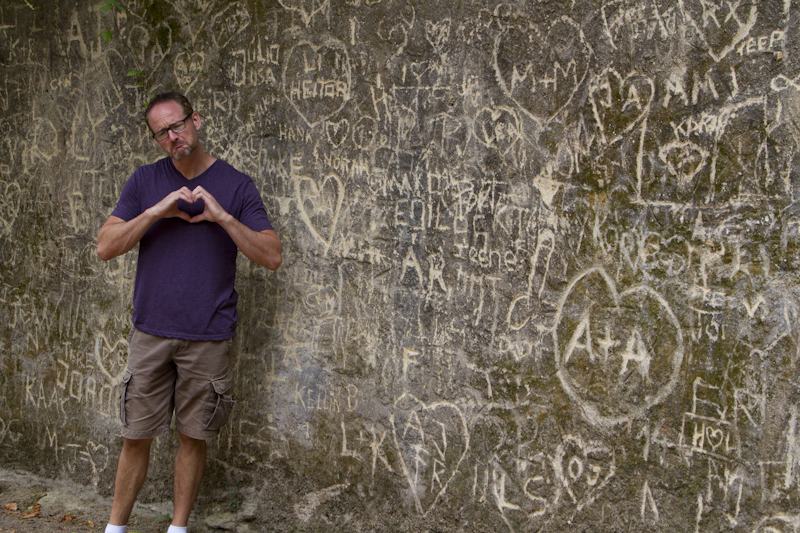
The most mysterious among them is the so-called “initiation well”. It’s a 30-metre deep hole in the ground — sort of an inverted tower — with steps leading downwards around the walls. There are 9 landings — perhaps in reference to Dante’s Nine Circles of Hell — and at bottom is a massive Rosicrucian Cross. A secret tunnel also leads from the bottom of the well to a distant part of the garden.
Climbing down into the well could symbolize a descent into the underworld, or perhaps into the depths of one’s innermost soul. Or maybe the initiate was meant to climb upwards, from the darkness of ignorance into the light of knowledge?
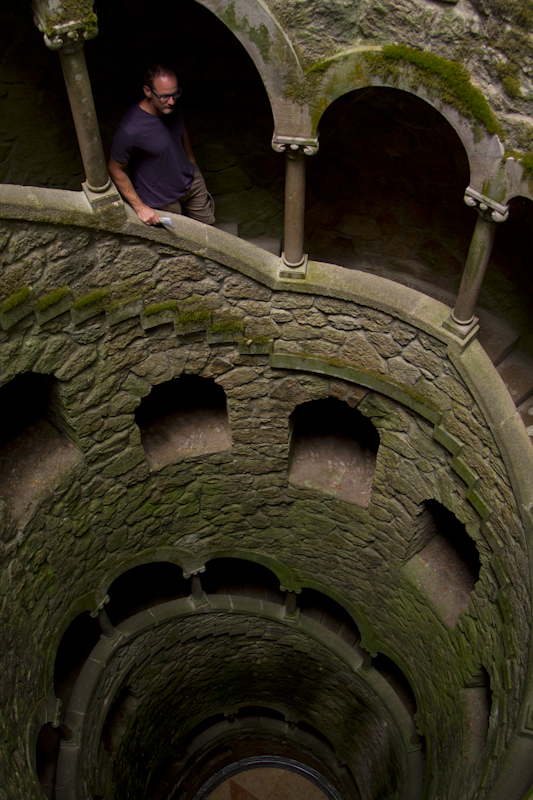
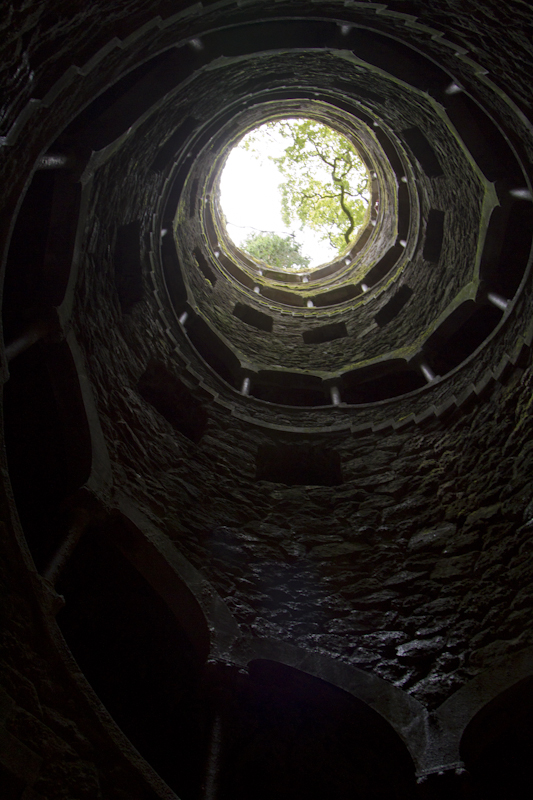
This strange garden and mansion was by far the highlight of the area, and I could easily imagine secluding myself in such a place with my books. But I would ban all tour groups, of course.
I ended my long mountain day by exploring the Pena National Palace.
This rather odd structure is a fantastic example of nineteenth century Portuguese Romanticism. It’s a strange blend of vibrant colours, turrets and spires that completely dominates a mountaintop overlooking the town. And it draws your eye the way that the sudden apparition of a fairy tale vision into our own reality would.
The building began as a chapel and monastery around 1493. But it was badly damaged by lightning in the 18th century, and lay in ruins until prince Ferdinand bought it in 1838 to construct a summer residence for the Portuguese royal family.
It looks as though a contentious husband and wife couldn’t agree on a style or a building plan, and so the frustrated architect just added a bit of everything: Neo-Gothic, Neo-Manueline, Neo-Islamic, and Neo-Renaissance.
Despite the occasional snipes from the travel press about its “hideous malformed appearance”, the place grows on you. It’s otherworldly, and it sets the imagination to soaring. And you’d be hard pressed to find a better view in all of Sintra than you’ll get from Pena’s terraces.
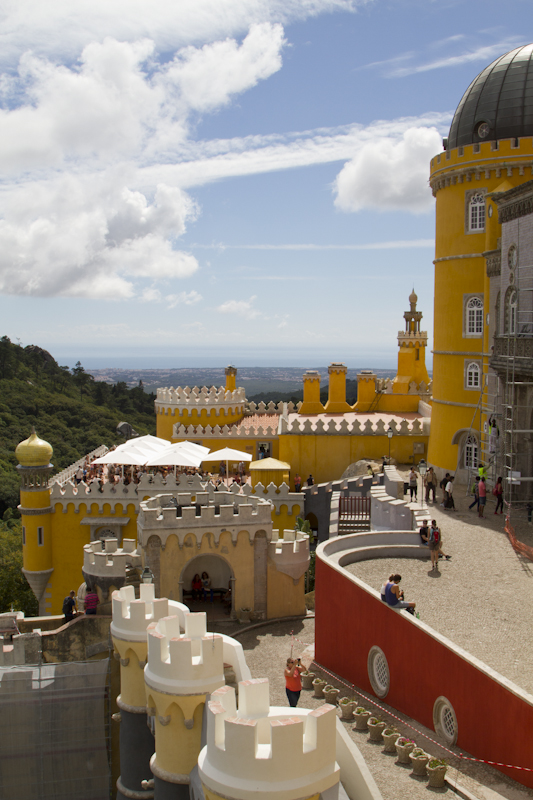
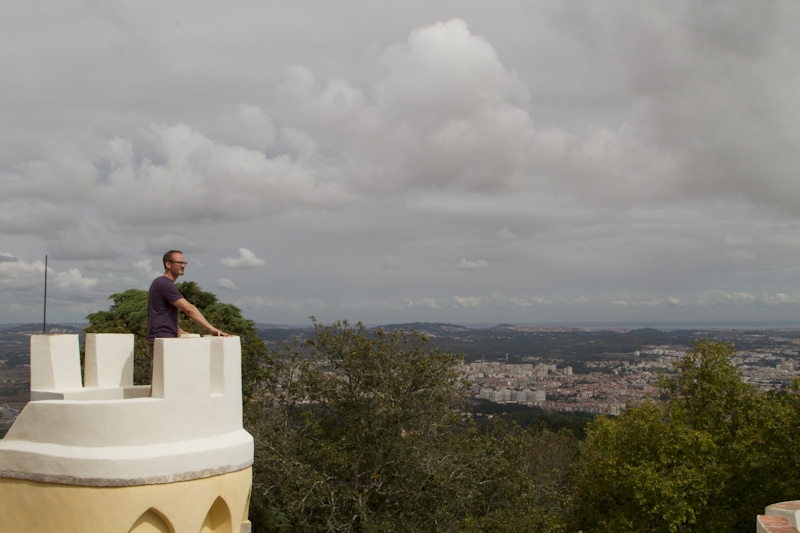
Make sure you check out the website for a fantastic aerial overview. It really must be seen from above.
If you’re in Lisbon for a few days, it’s well worth taking the trip out to Sintra. I debated it at first, because there’s just so much to occupy your time in Lisbon. But the train there isn’t much more than 30 minutes. It’s a pleasant ride if you choose one of the empty end carriages. And that cool mountain mist will rejuvenate you, and fill your head with mysterious dreams.
Photos ©Tomoko Goto 2014.

Get your FREE Guide to Creating Unique Travel Experiences today! And get out there and live your dreams...
